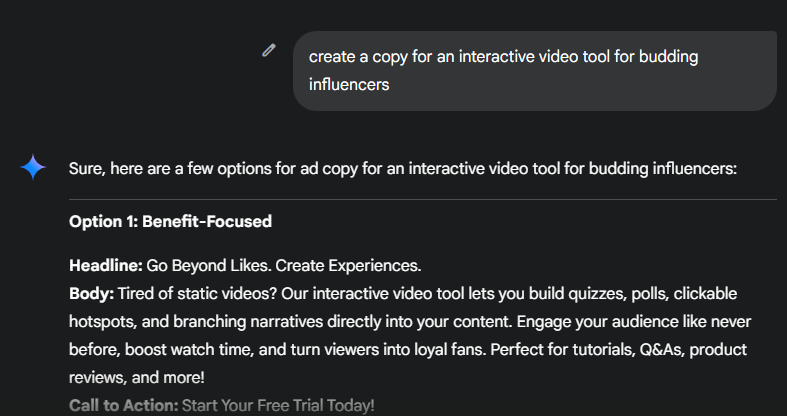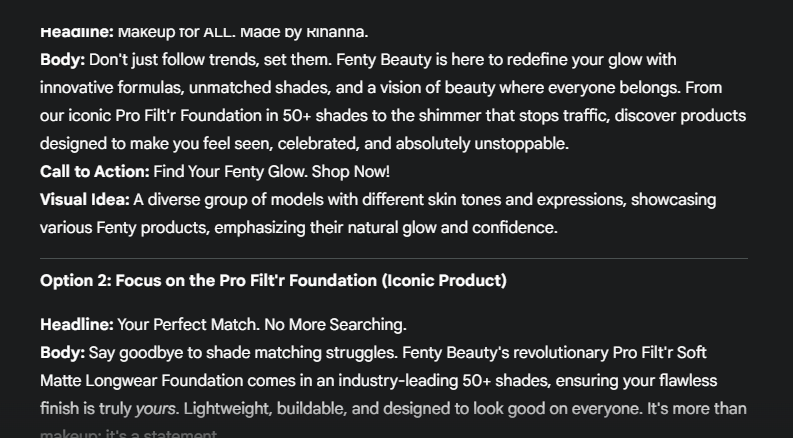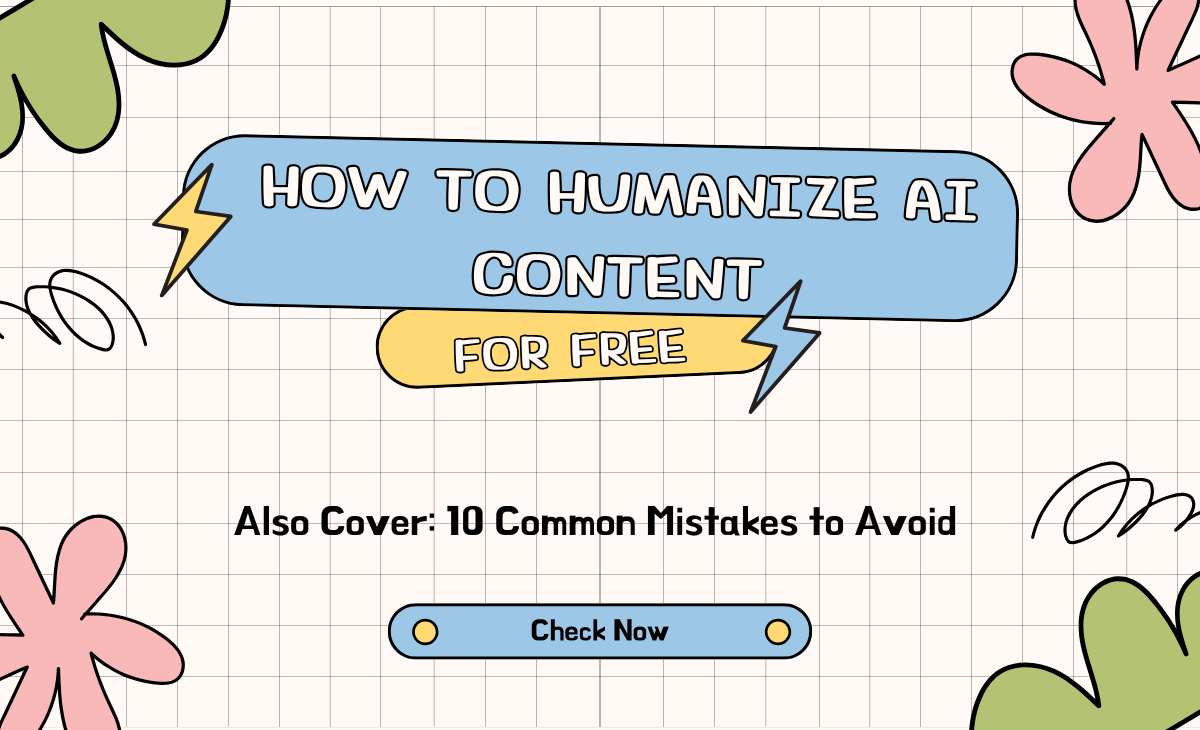AI’s capability to write hours of work in seconds is practically a dream come true for businesses. However, this happiness is usually short-lived, owing to AI’s lack of personalization and warmth in its writing. As we lean more towards an AI-automated setup, we are faced with one persistent question: How do you humanize AI content for free?
In the last few years, the competition in marketing has reached a point where one mistake can undo your entire legacy. Relying on AI-generated content can feel relaxing, but its hallucinations and lack of contextual awareness often lead to trouble.
AI doesn’t understand our pride and emotional attachment to our culture, our declining attention span, or our social media fatigue as it generates another tiresome piece of content for us. So, it is inevitable that we step in. But how do we know we are doing it the right way? Let’s find out.
❌ Mistake 1: Overlooking the Importance of Tone and Voice
Making AI content sound natural is a challenge because sometimes we have to redo the entire thing. You have to understand that AI doesn’t understand the concept of a brand tone or voice; all it knows is to be relevant to your prompt as it can. Most businesses think writing a grammatically correct blog is all it takes for conversion. But one can never be more wrong. Think about it this way:
➡️ You are a business that sells an interactive video tool for budding influencers. If you wish to lure a dynamic customer base like this one, you have to be :
- Upfront
- Fresh
- Fast,
- Help them understand how you are different as a brand.
However, this is what Google Gemini had to say when I had asked it to create a copy for the same:

Google Gemini Sample Copy
Not only does it sound like a tired sales pitch, but it does nothing to highlight the brand’s voice. Reading this copy will never help you understand how your brand is different from the thousands of others that are out there. The end results? The lack of a brand voice makes you another forgettable corner on the internet that’s unsure about its own product.
Can you imagine the impact of the same product if it read something like :
Tired of one-way videos that bring in next to no engagement?
“It’s time to level up. Our interactive video tool transforms ordinary content into unforgettable experiences—think quizzes, polls, clickable hotspots, and branching storylines … continue”
❌ Mistake 2: Neglecting Cultural and Contextual Nuances
Apart from the quality of the product, what truly matters the most for a user is the feeling of being included. It inculcates a sense of belonging and representation, which works greatly for your brand. As a user, you will be instantly drawn to a product that knows how you feel in your body and mind.
A great example of this would be Fenty Beauty, the global brand owned by the pop icon Rihanna. The company tackled a major gap: the lack of representation for people of color in makeup foundations. This helped the brand not only garner worldwide praise but also actual conversions that helped push the numbers.
But let us see how Google Gemini describes Fenty Beauty:

❎ It missed out on highlighting the USP of the brand and reduced it to a mere feature.
❎ Gemini failed to talk about the pain points of being a person of colour looking for their ideal makeup shade.
❎ Not only does it read like a robotic script, but a tired yet desperate attempt to make a sale.
A critical step in making AI sound human is about asking a basic question: Will you be buying from a brand that talks like this?
❌ Mistake 3: Ignoring SEO Optimization in Humanized Content
There is a common misconception that if we solely rely on humanized content, we will rank automatically. Even though it’s partially true, we still have to rely on SEO principles to be on the first page.
Writing in a more humanized tone is one of the most critical aspects of SEO and is just a single piece of the puzzle. Regardless of the nature and tone of your content, you still have to:
- Structure your content
- Use strategic keywords
- Make your website mobile-friendly
- Optimize meta titles and descriptions, and so much more.
Search Engine Optimization is a different set of work altogether. If you keep on relying on a humanized voice for your content, you are checking the most critical item on the list. But you have to be mindful of the other measures to have that perfect optimization.
❌ Mistake 4: Over-Humanizing to the Point of Losing Clarity
It is only normal to feel anxious with AI-generated content, as it needs careful editing and refinement to eventually make sense. But sometimes we tend to get carried away by this fear. We tone down the rigidity of machine-generated content to the point where it starts to sound unserious.
Clarity in content writing is mostly about having that human touch. We are also witnessing a massive shift in our marketing space where we are opening up to a more personalized approach.
But sometimes in our pursuit to make robot-written text feel human, we tend to cross the lines of professionalism. We infuse so many colloquial references that the content becomes a show as compared to the product and defies its main purpose.
❌ Mistake 5: Failing to Edit and Proofread Humanized Content
The only major advantage of relying on AI to write your content is that it would give you flawless results. There is no grammatical error with AI, nor is there a misplaced sentence.
But things are not the same with a humanized piece of writing. There is always going to be a spelling mistake, an improper sentence, an irrelevant word, and so much more. So, proofreading and editing are an indispensable part of humanized content.
It is a critical step in catching errors and at the same time ensuring quality for your readers :
✔️ Catch hidden errors
✔️ Tighten sentence flow
✔️ Refine tone and clarity
✔️ Ensure consistency across your brand messaging
❌ Mistake 6: Not Testing Content Across Different Platforms
Imagine there is a new product you wish to buy, which has a great website that you love. You see that they write blogs highlighting the pain points, and it feels like they know you in and out. As if the products were made keeping you in mind. You feel a bit of excitement and get a lot of clarity in knowing that your favorite brand knows what they are talking about.
But the moment you switch platforms and check their existing social profiles, you find them robotic, nonchalant, and betraying their other online persona altogether.
This disconnect? It breaks trust.
If you are planning to humanize machine-generated content, you have to be consistent across all your online profiles. It will not only help you connect with your audience, but also be consistent with your brand’s voice. It is this consistency in your tone that will be the ultimate testament to your dedication.
❌ Mistake 7: Disregarding Audience Feedback
No brand does it right in their first attempt, they get it right by listening to feedback and remarks. A feedback-driven content improvement strategy can be your ultimate saving grace if you wish to hit the numbers from the start.
You have to understand that feedback is free research!
So when a user tells you that they do not understand a particular section of your content, or worse, they feel excluded, you have to take charge. Ignoring the comments, messages, and story mentions can be the reason your brand never reaches its true glory.
It is only you who has a ground-level check and understands what your users want is only then you can write something that’s truly human. Not only that, but it allows you the space to form a connection that no paid ad or promotion can bring in.
❌ Mistake 8: Forgetting About Visual Elements and Formatting
You can write the best blog that’s ever written and still lose out on the traffic. The reason behind it is simple: our declining attention span doesn’t allow us to go through something that’s not visually appealing.
Your competition right now is a 2-minute video, and your lack of trying to look good is only going to be an issue. The thing is, visual hierarchy and formatting are not optional; they are a necessity.
If you wish not to end up with a website that only has cobwebs, your humanizing machine-generated content drive should also include:
- Clear headings and subheadings (use H2s and H3s!)
- Bullet points and numbered lists
- Ample white space
- Relevant images, GIFs, infographics, and so much more.
❌ Mistake 9: Skipping Personalization and User Intent
AI doesn’t know how to make your audience click that“ Buy Now” button. All it knows are some keywords and contextual references. So when you talk about selling an SEO optimization tool or a foundation that needs to match your shade, it doesn't see problems. It only sees the relevant keywords.
What happens when you just rely on keywords to sell? You miss out on giving the users a reason to buy your product. It is one of the major mistakes when trying to humanize AI-generated content, we tend to ignore the frustration of your potential user.
“ This software improves your productivity “ is not a convincing enough line to pitch a product. You have to convince your users first that you know how frustrating the lack of productivity can feel.
Plus, there is always the SEO advantage of writing with an intent that allows Google to help understand your product better. Google favors content that aligns with searcher's intent and provides real value.
❌ Mistake 10: Relying Solely on AI Tools Without Human Oversight
It might seem like a great idea to let an AI tool take over your entire content writing operations. You set up an agent to write, humanize, and do it all for you. Do you think it will be as efficient as you want it to be?
No matter how smart your AI agent is, it can’t fully understand your brand’s voice, evolving tone, nuanced messaging, or real-time context without you in the loop. The lack of human oversight is the only major drawback in an AI-driven content setup. Regardless of the purpose of the tool, AI will always be unaware of the context without a helping hand.
That’s why a tool like Humanize AI is designed in a way to follow your lead.
You take charge of the content pieces that need to be refined with a human touch. It is a setup where you oversee everything but without even breaking a sweat in the process. Humanize AI is the perfect example of the things we can achieve if Human creativity is backed by AI’s efficiency.
Conclusion
Humanizing AI content is not just about sprinkling in a few “you,” “your,” or “we” pronouns. It is about crafting a piece that sounds like it’s written solely for your users.
It is about building a bond of trust with your potential users and letting them know that they are in safe hands. Humanizing content goes beyond just refining the vocabulary, it's about having a unique voice, real-world context, and thoughtful oversight.
When you ask yourself How to Humanize AI Content for free, you must remember that the idea is to present a narrative that’s inclusive and follows SEO guidelines.
However, the best part in all this is the fact that you don’t even have to have a massive budget to get started. All you need is a tool like Humanize AI and a brand pitch idea that can change your marketing game forever.
FAQs
What does it mean to humanize AI content?
Humanizing AI content means letting your content shed all the robotic undertones that might be detrimental to your brand’s voice. Along with that, it is a personalization of your content that feels like it is written by someone for someone and is not a generic, repetitive approach.
Can you humanize AI-generated content without paid tools?
Yes, nowadays, humanizing AI-generated content is very easy and doesn’t require much at all. With tools like Humanize AI, you can edit, refine, and redo your content in next to nothing at all.
How does humanized content affect SEO?
Humanized content is one of the critical prerequisites if you wish to rank in Google. It helps with metrics like time on page, click-through rates, and much more. Additionally, Google’s helpful content update prioritizes human intent over robotic hallucinations.
How to humanize AI content?
Some of the best practices to humanize AI content effectively include:
- Understanding cultural nuances
- Adding personal insights
- Relying on Editorial oversights
- Maintain consistent brand tone across platforms
- Keeping up with visual formatting standards.

